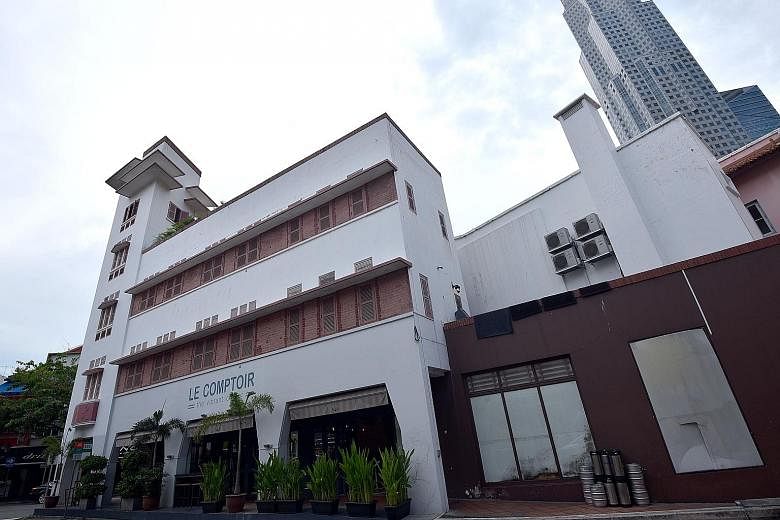At the corner of 79 Circular Road is a deceptively simple building that stands out against the more ornate shophouses nearby.
The streamlined building, similar to some in Kampong Silat, Tiong Bahru and Jalan Besar, boasts superb craftsmanship and construction details such as exposed brick walls and chamfer columns, which are thick at the top and taper off towards the base.
Timber windows with louvres set against a brick wall add rhythm and texture to the steel-and-concrete building.
While the building has no official name, its interesting shape has left it open to many interpretations - people have likened it to the prow of a boat, a plane and even a Chinese crane.
The building's understated style is very much like its architect, the late Ho Kwong Yew, who was said to be a quiet man. He is now regarded as an important figure in the Modern Movement in Singapore during the 1930s.

Dr Lai Chee Kien, a member of the Urban Redevelopment Authority's (URA) Conservation Advisory Panel and adjunct associate professor at the Singapore University of Technology and Design, says of the architect's work: "With a limited palette of materials, he was able to create something very refined."
Born in 1903, Mr Ho was last seen during the Japanese Occupation in 1942. His death, as Mr Kelvin Ang, director of conservation management at URA, puts it, "deprived us of one of the leading lights of architecture".
The building was given conservation status in 1989, the same time as its surrounding Boat Quay area.
For the feature tower at the junction of Lorong Telok and Circular Road, Mr Ho used a triangular form and thin concrete fins to create a striking vertical landmark for the district, as well as to make full use of the corner space.

However, according to Dr Lai, the two extra storeys in the tower were just to "give something special to the building, but it spoke about the way architects would also contribute to the way urban blocks could be read in continuity, as a whole".
The building makes references to surrounding architecture, "quoting" some of their features. For example, its flushed louvre doors and linear bands are also found in neighbouring shophouses.
Although now white, the building was originally an ochre yellow lime-wash, a popular colour at that time in the region. Buildings in Bangkok, Thailand; and Saigon, Vietnam still sport the same colour.
Dr Lai reckons that it was most likely used as an office and may have been used by a school during the 1990s.
A coffee shop, which occupied the ground floor from when it was first built till the early 1990s, has since been taken over by French bar Le Comptoir. Bistro lounge Chateaux now occupies the upper floors..
- This is a monthly column on heritage buildings.
Correction: An earlier version of this article wrongly stated Mr Kelvin Ang's name as Mr Kelvin Au. We are sorry for the error.


